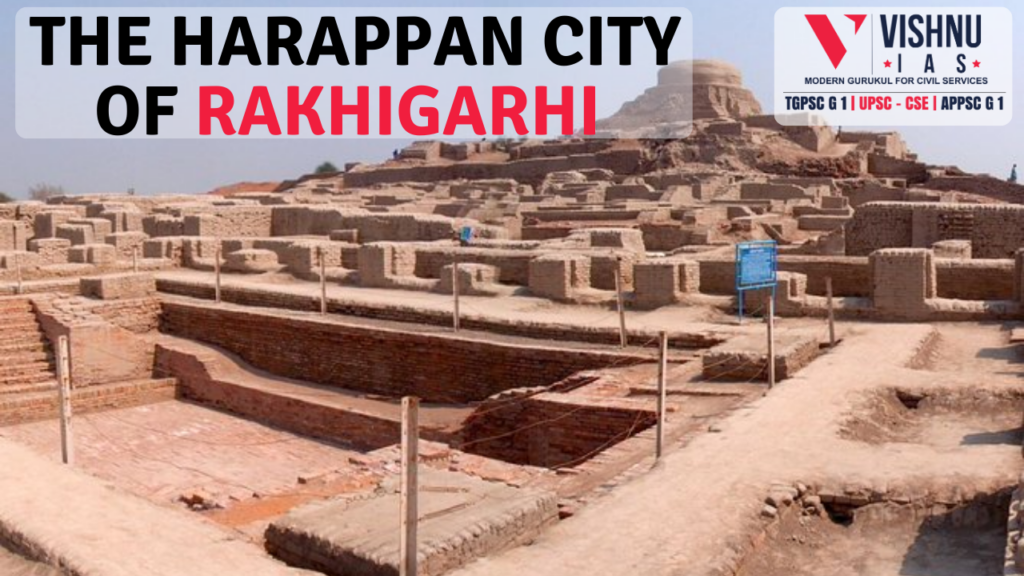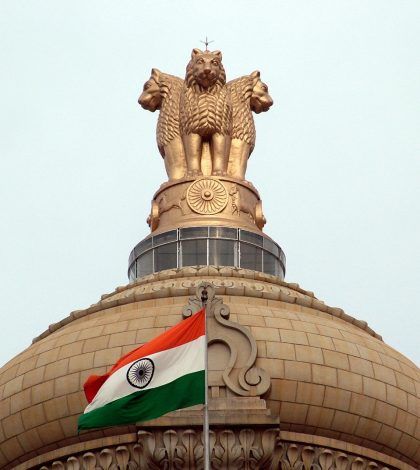Critically describe evidences from Rakhigarhi and its linkages to Harappan civilization.
Approach
- Introduction: Few points about the Rakhi Garhi
- Body: Add comprehensive analysis about the evidences from Rakhi Garhi and its linkages to Harappan civilization
- Conclusion: add its present relevance
INTRODUCTION
Rakhigarhi, located in the Hisar district of Haryana, India, is one of the most significant archaeological sites linked to the Harappan civilization. The site has provided substantial evidence that enhances our understanding of the Indus Valley Civilization (IVC) and its extensive history.
BODY
Key Evidence from Rakhigarhi
- Chronological Evidence:
- Excavations at Rakhigarhi have revealed that the site was occupied during the pre-Harappan (5000-3300 BCE), early Harappan (3300-2600 BCE), and mature Harappan (2600-1900 BCE) phases. This extensive timeline suggests that Rakhigarhi was a major urban centre throughout the different phases of the IVC.
- Urban Planning and Architecture:
- The site has uncovered well-planned streets, drainage systems, and large residential buildings, which are characteristic features of Harappan urban planning. These findings align with similar structures found in other major Harappan sites like Mohenjo-Daro and Harappa.
- Artifacts and Material Culture:
- Numerous artifacts, including pottery, tools, ornaments, and seals, have been discovered at Rakhigarhi. These items are similar to those found at other Harappan sites, indicating a shared material culture and technological advancements.
- Burial Practices:
- Excavations have revealed burial sites with human skeletons, which provide insights into the social and cultural practices of the Harappan people. DNA analysis of these remains has shown continuity in the genetic makeup of the population, suggesting a stable and long-lasting community.
- Agricultural Evidence:
- Evidence of agricultural practices, including the cultivation of crops like wheat and barley, has been found. This supports the idea that Rakhigarhi was a self-sustaining urban center with a strong agricultural base.
Linkages to the Harappan Civilization
- Cultural Continuity:
- The artifacts and architectural features found at Rakhigarhi show a clear continuity with other Harappan sites. This suggests that Rakhigarhi was an integral part of the broader Harappan civilization, sharing its cultural and technological advancements.
- Trade and Economy:
- The discovery of various artifacts, including those made from materials not locally available, indicates that Rakhigarhi was involved in long-distance trade networks. This is consistent with the Harappan civilization’s known trade connections with regions as far as Mesopotamia.
- Genetic Evidence:
- DNA analysis of human remains from Rakhigarhi has provided crucial insights into the genetic makeup of the Harappan people. The findings suggest that the population had a diverse genetic background, which aligns with the theory of a complex and interconnected society.
CONCLUSION
The evidence from Rakhigarhi significantly contributes to our understanding of the Harappan civilization. The site’s extensive occupation timeline, advanced urban planning, rich material culture, and genetic continuity all highlight its importance as a major urban centre within the Indus Valley Civilization. These findings not only reinforce the interconnectedness of Harappan sites but also provide a deeper insight into the social, economic, and cultural dynamics of one of the world’s earliest urban civilizations.
Anthropology Full Course at Vishnu IAS Academy
What does Course Offer?
- 4 Months (250+ Class Hours)
- Online (App + Web) / Offline / Hybrid Mode of Classes
- Live + Recorded Videos Access For 1 Year
- 2 Hour Live Class From Monday to Saturday (1.5 Hours for Class + ½ Hour for Doubt Solving)
- Foundation to Advanced Level of Teaching
- Simple and Integrated Content
- One Stop Solution Books
- Regular Value Added Content
- Current Affairs & Case Studies Modules
- Daily Answer Writing Practice
- Weekly Grand Tests On Sundays & Evaluation With Guidance and Topper Will be Rewarded
- 500+ Model Answers
- 9 AM – 9 PM Support System
- Free GS Current Affairs
- Free Interview Guidance for Anthropology


